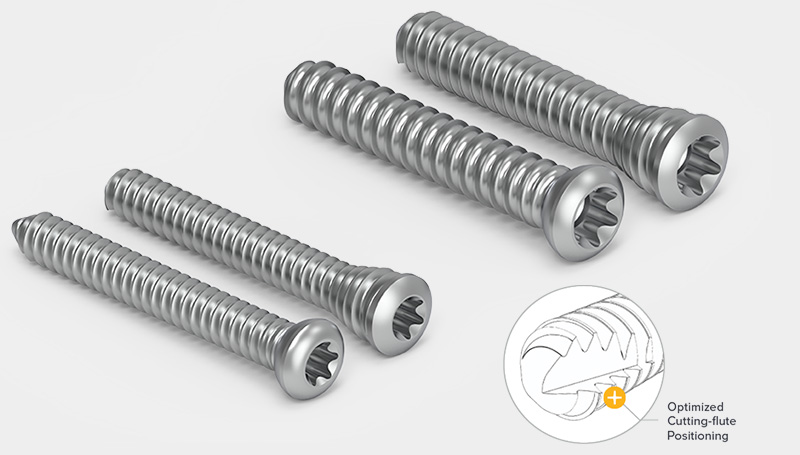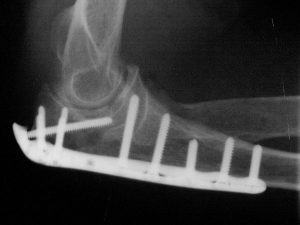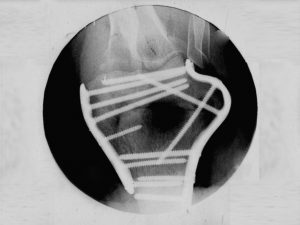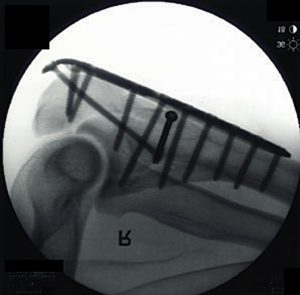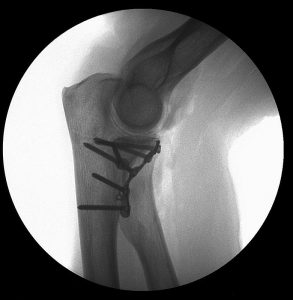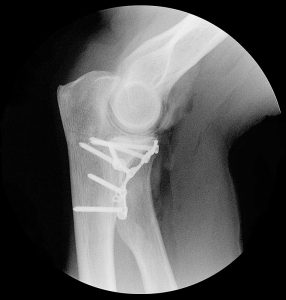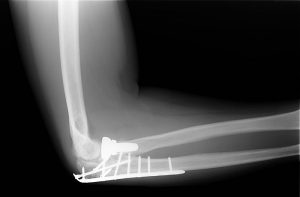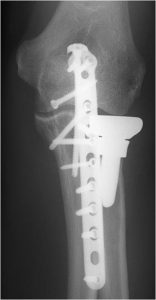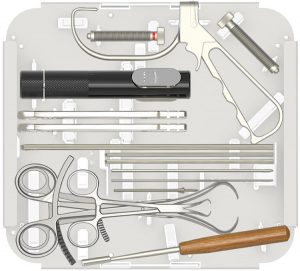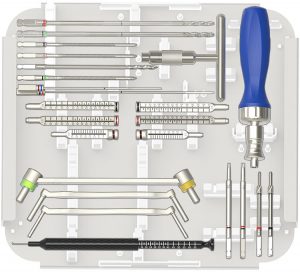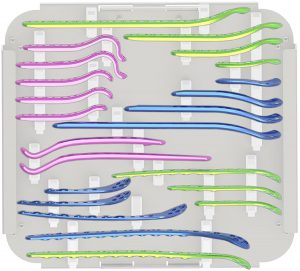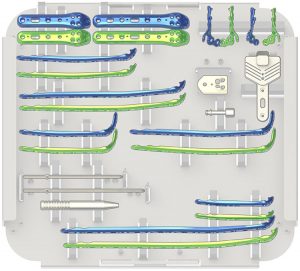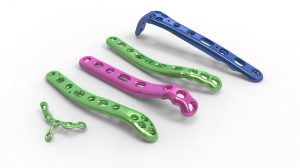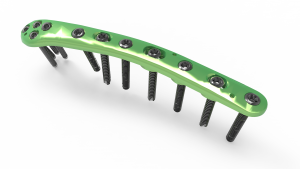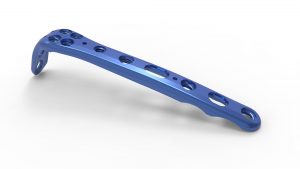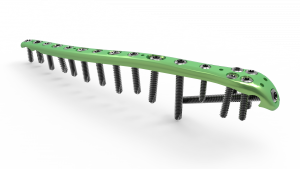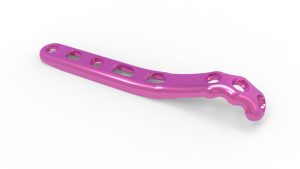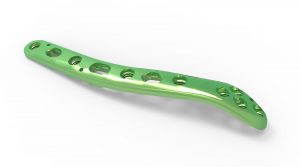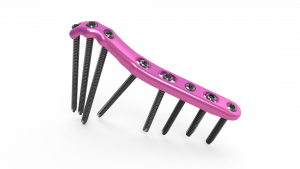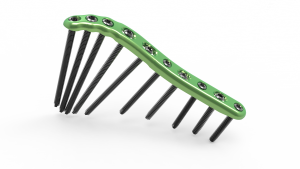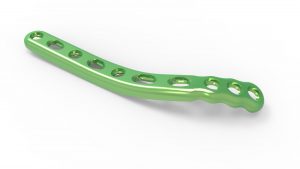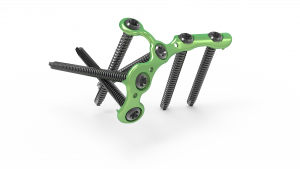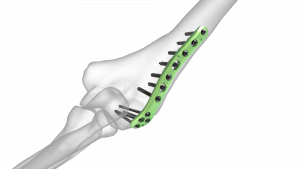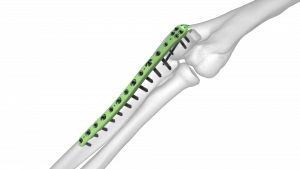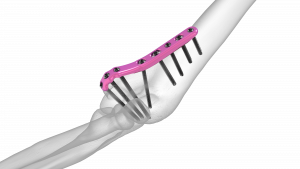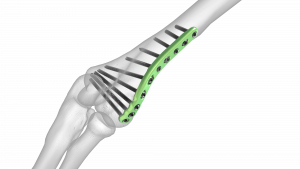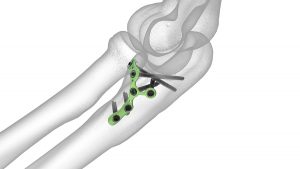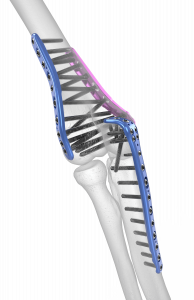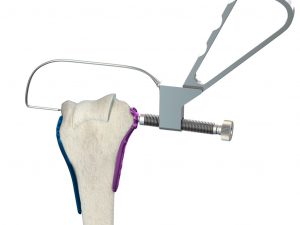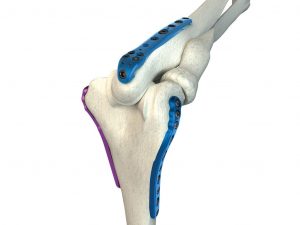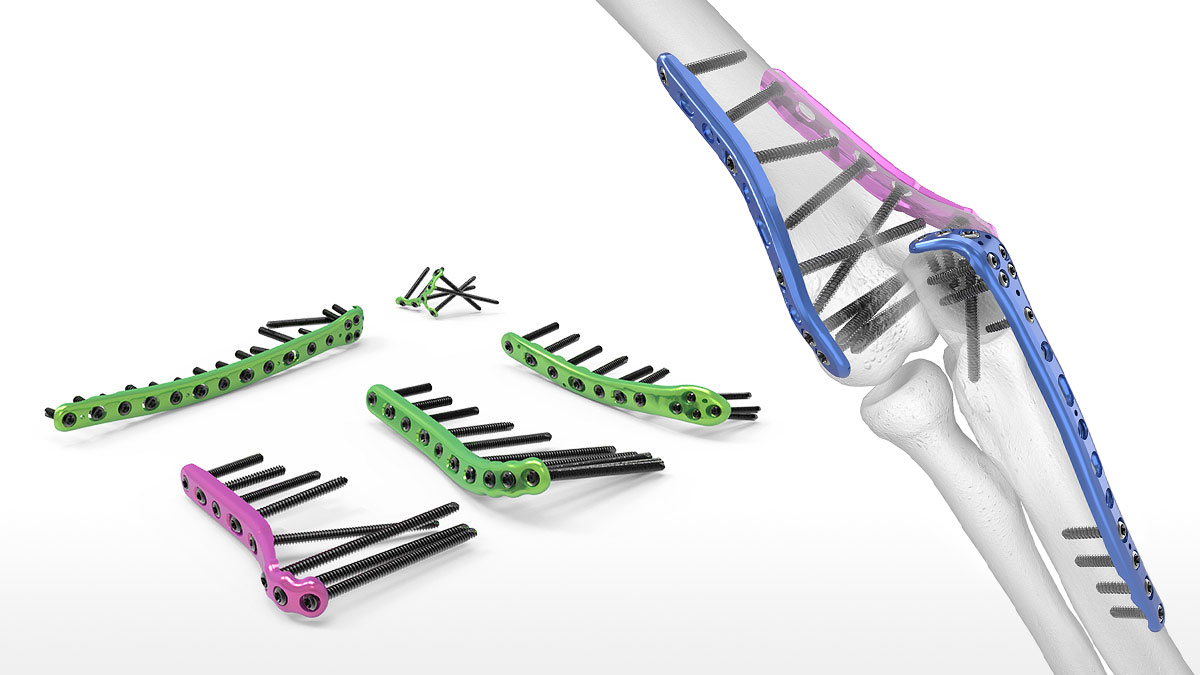
Product Overview
The Acumed Elbow Plating System offers multiple fixation options for fractures of the distal humerus, olecranon, and coronoid, as well as osteotomies of the olecranon.
The Acumed system was the first elbow plating system to offer precontoured, parallel distal humerus plates. Long screws in the Lateral Column Plate are designed to interdigitate with screws from the Medial Column Plate, providing a parallel construct for the stabilization of distal humerus fractures.
Related Documents
Key Publications
Key Features
Industry First
The first-to-market comprehensive, precontoured elbow plating system.
Olecranon Plate
The screw trajectory is designed to allow screws to capture fracture fragments and avoid other screws regardless of the screw length selected.
Anatomic Curvature
Lateral tilt in the proximal region, a distal bow throughout the ulna, and 6° proximal ulnar dorsal angulation (PUDA) are designed to restore native patient anatomy.
Coronoid Plate Family
These plates are designed to act as a buttress to the coronoid and help counteract the tendency of the elbow to subluxate.
Olecranon Plates
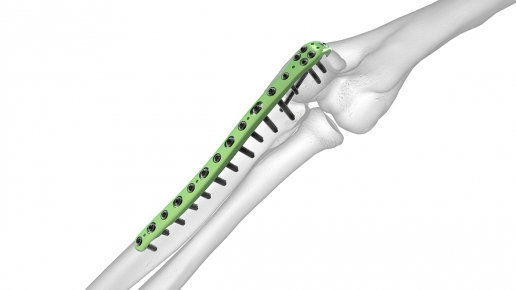
The Acumed Olecranon Plates provide fixation for both fractures and osteotomies in the proximal ulna. Designed to provide an anatomic fit, the plates contour proximally and along the shaft. In addition, the screw trajectory allows screws to capture fracture fragments and avoid other screws regardless of the screw length selected.
Coronoid Plates
Designed for fractures of the anteromedial facet of the coronoid, the Acumed Coronoid Plates are intended to act as a buttress to the coronoid and help counteract the tendency of the elbow to subluxate. The plate design, coupled with the instruments in the Elbow Plating System, provide multiple fixation options for a variety of fracture patterns.
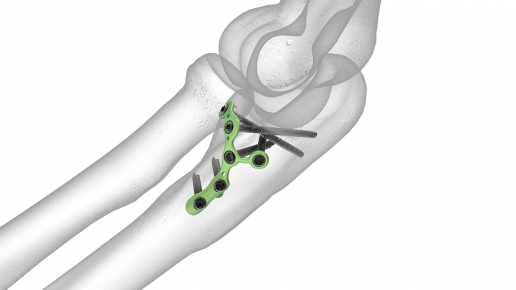
Medial Column Plates
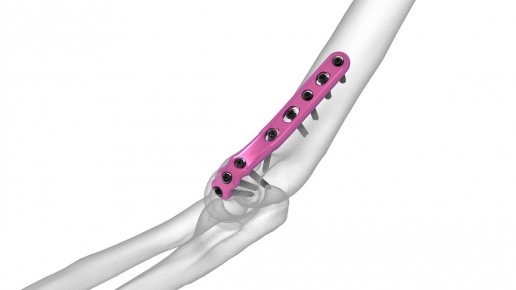
The Acumed Medial Column Plates are designed to offer fixation and compression of fractures of the distal humerus by extending down distally, or wrapping around, the medial epicondyle and extending up the condylar ridge. This fixation is maximized when the screws in the articular fragments interdigitate with the screws from the Acumed Lateral Column Plate on the lateral side.
Lateral Column Plates
The Acumed Lateral Column Plates improve upon the biomechanics of posterior plating by enabling longer screws in the articular fragments to interdigitate with the screws from the medial side. When used in conjunction with Acumed Medial Column Plates, the construct acts as a template for complex fractures of the distal humerus.
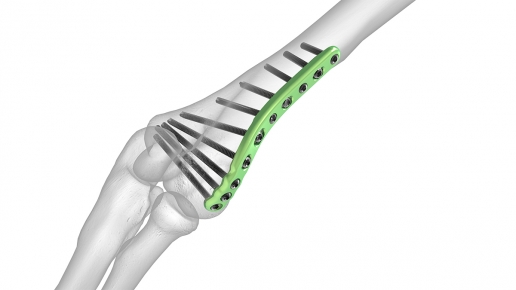
Posterolateral Plates
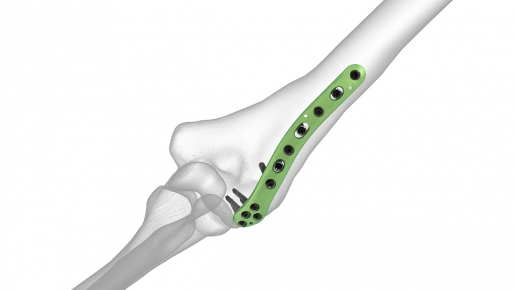
The Acumed Posterolateral Plates are specifically designed for isolated capitellar fractures and for surgeons who prefer a 90 degree-90 degree plate application. A precontoured bend in both the diaphyseal region of the plate and the lateral tip to support the anatomy, while the unique, diverging screw geometry of the distal hole cluster allows for maximized fixation at the fracture site.
Image Gallery

X-Ray
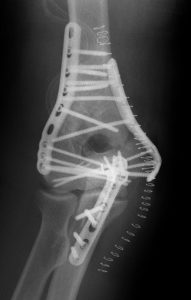 Elbow Plating System : Anteroposterior view of distal humerus fracture, with parallel medial/lateral plating and olecranon fracture/osteotomy with olecranon plate
Elbow Plating System : Anteroposterior view of distal humerus fracture, with parallel medial/lateral plating and olecranon fracture/osteotomy with olecranon plate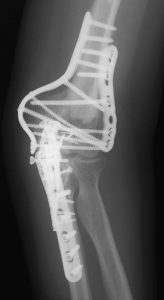 Elbow Plating System : Anteroposterior view of distal humerus fracture, with parallel medial/lateral plating and olecranon fracture/osteotomy with olecranon plate
Elbow Plating System : Anteroposterior view of distal humerus fracture, with parallel medial/lateral plating and olecranon fracture/osteotomy with olecranon plate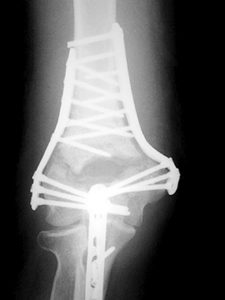 Elbow Plating System : Posterior view of distal humerus fracture, with parallel medial/lateral plating and olecranon fracture/osteotomy with olecranon plate
Elbow Plating System : Posterior view of distal humerus fracture, with parallel medial/lateral plating and olecranon fracture/osteotomy with olecranon plate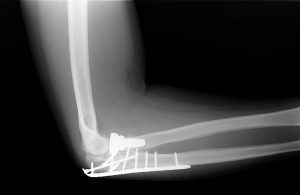 Elbow Plating System : Lateral view of radial head replacement, with ARH and olecranon fracture fixation with olecranon plate
Elbow Plating System : Lateral view of radial head replacement, with ARH and olecranon fracture fixation with olecranon plate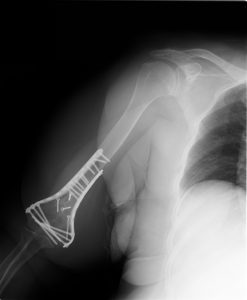 Elbow Plating System : Anteroposterior view of distal humerus fracture, with parallel medial/lateral plating
Elbow Plating System : Anteroposterior view of distal humerus fracture, with parallel medial/lateral plating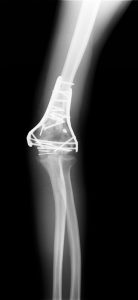 Elbow Plating System : Anteroposterior view of distal humerus fracture with parallel medial/lateral plating
Elbow Plating System : Anteroposterior view of distal humerus fracture with parallel medial/lateral plating
